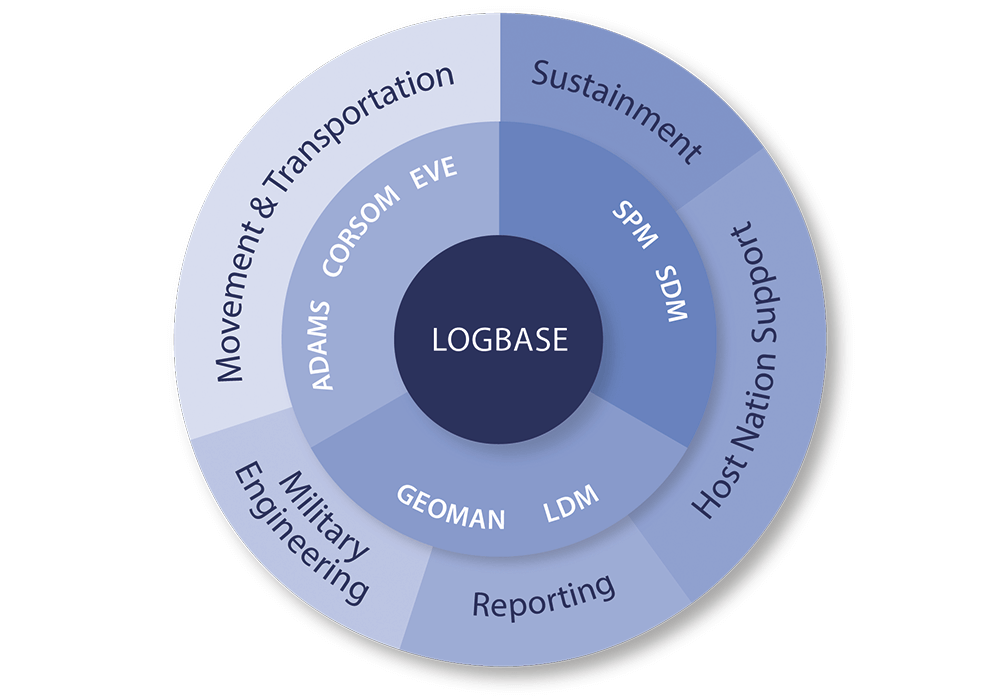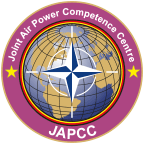‘Prospicere in pace oportet quod bellum iuvet’ – ‘Prepare in peace what you may need for war.’ This timeless Latin adage has never been more relevant. Russia’s invasion of Ukraine has reshaped Europe’s security landscape, making NATO’s deterrence strategy a critical pillar of stability.
Nowhere is this urgency more pronounced than on the Alliance’s Eastern Flank. Estonia, Latvia, and Lithuania stand on the front lines of NATO’s defence, their proximity to Russia making them both strategic assets and potential flashpoints. As tensions rise, ensuring these nations can support and sustain Allied forces is no longer just a logistical concern–it is a strategic necessity. Host Nation Support (HNS) is the backbone of NATO’s deterrence efforts, as it enables rapid troop deployment, sustained operations, and creates the resilience needed to defend the Baltics against emerging threats.
This article explains what HNS is, describes why it is crucial for NATO’s defence posture, and recommends improvement areas for Alliance members to strengthen the HNS capabilities.
Understanding Host Nation Support
The ability for NATO to deploy and sustain Allied forces depends on host nation support. Defined in AJP 4.3 as ‘civil and military assistance rendered in peace, crisis, or war’ by a host nation (HN) to Alliance forces, HNS ensures that Allied troops can operate effectively while minimizing the logistic strain on sending nations (SN).1 HNS plays a crucial role in four key areas:
- Logistics: Managing transportation networks, supply chains, storage areas, and maintenance procedures to ensure resources are readily available.
- Infrastructure: Developing and maintaining roads, railways, airports, seaports, and energy systems to support incoming supplies and military operations.
- Force Deployment: Facilitating Reception, Staging, Onward Movement, and Integration (RSOMI) of position troops and equipment quickly and efficiently.
- Security: Implementing physical and cybersecurity measures to protect Allied forces and associated communication networks
Effective HNS is a force multiplier that strengthens national defence. This is especially true for smaller nations like the Baltic States, who, by pre-positioning supplies, enabling rapid mobility of reinforcements, and enhancing logistical interoperability, enable NATO forces to quickly defend against an attack.2
A prime example of HNS in action is NATO’s Baltic Air Policing mission, where Allied Quick Reaction Alert (QRA) aircraft rotate through Lithuania and Estonia to safeguard NATO nations’ airspace.3 In addition to the air policing mission, NATO bolsters regional security with rotational forces and NATO Force Integration Units (NFIUs).4 The war in Ukraine has reinforced the urgency of these deterrence forces, and underscored the importance of robust HNS arrangements to ensure swift deployments and sustainment operations in this vulnerable region.
Effective HNS requires joint responsibility by both the host nation and sending nations. HNs must prepare infrastructure and streamline their logistic procedures, while SNs must train for interoperability and mitigate bureaucratic or technological hurdles. A strong, adaptable HNS system is vital to NATO’s defence posture, but effective HNS must be proactively accomplished and cannot wait until times of crisis.5
Geographic Challenges and Infrastructure Requirements in the Baltics
The Baltic States face unique geographic and logistical challenges that complicate NATO’s reinforcement and warfighting capability in a crisis. The Suwalki Gap, a narrow 65-kilometre land corridor connecting the Baltic States to the rest of NATO, is a dangerous bottleneck between Belarus and the Russian heavily militarized exclave of Kaliningrad. This is the only way to get from Poland and Central Europe to the Baltic states by road or rail. If Russian forces were to cut off this corridor, the Baltic States could be quickly isolated from NATO reinforcements, underscoring the importance of robust and pre-emptive HNS.6
From a logistical perspective, effective defence of the Baltics requires proactive infrastructure modernization in three key areas:
- Transport Networks: Secure and modern road and rail systems are essential for rapidly deploying troops and equipment. These routes must be resilient to disruption and capable of handling high-volume military movements.
- Air and Seaport Facilities: Upgraded ports and airfields provide redundant entry points for the Baltics, especially if land routes are compromised. Facilities must be large enough to handle simultaneous troop and equipment arrivals, and must be protected from modern air and sea threats such as small unmanned aerial systems and unmanned surface vehicles (UAS/USV).
- Strategic Storage Facilities: Regional supply depots reduce reliance on resupply lines during a crisis, ensuring access to resources even if lines of communication are disrupted.5
These infrastructure improvements directly support NATO’s RSOMI process in case of a crisis, especially in the early phases when a HN must rapidly receive forces into the theatre, prepare them for deployment, and integrate them into defensive plans.
Recent Steadfast Defender 2024-series exercises, which focus on multinational operational readiness in the Baltics, have demonstrated the importance of well-prepared infrastructure for deploying NATO’s Very High Readiness Joint Task Force (VJTF) to the Baltic region. Key lessons included:
- Pre-coordination requirements between host nation and NATO forces;
- Early infrastructure preparation by Baltic States;
- Effective movement control systems and tracking;
- Strong host nation security of SN forces.
Additionally, these exercises provided valuable HNS lessons concerning effective command and control (C2), including the value of NFIUs as a crucial link between national forces and NATO reinforcements. These small headquarters, composed of HN and SN personnel, coordinate operations, assess logistics challenges, and allocate reinforcements. Their success relies on strong civil-military cooperation, proactive Memorandums of Understanding, deliberate planning, and continued joint exercises.
To sustain a credible deterrence posture, NATO must continue leveraging local infrastructure, reducing logistical burdens, and strengthening its military relationships across the Suwalki gap and the broader Eastern Flank. Without HNS, and associated proactive measures from both HNs and SNs, NATO’s ability to defend its Baltic Allies could be severely compromised.
Host Nation Support to Agile Combat Employment
NATO’s deterrence strategy for the Baltic States relies on interoperability between HNs and SNs, and this is especially true with Agile Combat Employment (ACE). ACE is a proactive and reactive manoeuvre strategy designed to increase survivability and sustain combat operations by disrupting enemy kill chains. One mechanism for this is the dispersed basing strategy, whereby forces operate across multiple dispersed locations, including civilian airfields and highways. Additionally, ACE strives to reduce reliance on large bases by using minimal logistics footprints, and it uses distributed C2 networks to complicate enemy targeting.7
The Baltic geography makes ACE a particularly valuable strategy, permitting NATO to sustain air operations even under contested conditions. However, the scheme of manoeuvre presents unique C2 and civilian-military cooperation challenges. As military forces spread out and continually relocate throughout the AOR, effective HNS must adapt to the increasingly dynamic pace of operations, and much consideration must therefore be given to communicating, tracking, and resupplying dispersed forces in a combat scenario.
Technological Integration Supporting Logistics
In modern warfare, logistics is not just an operational necessity but a strategic linchpin. For NATO, particularly in the Baltic States, ensuring a resilient and digitally integrated multinational logistics framework is vital. This need has only grown in urgency as the Alliance seeks to enhance its deterrence posture and maintain operational readiness against evolving threats.
Beyond the traditional focus on physical infrastructure, modern military operations require advanced technological systems to facilitate the rapid and coordinated movement of forces and supplies. NATO’s logistical solution is called the Recognised Logistics Picture (RLP) – a shared digital framework that provides a comprehensive understanding of logistics requirements, capabilities, and movements across all NATO participants.
The Logistics Functional Area Service (LOGFAS) serves as the primary tool for achieving the RLP, enabling information exchange across national and organizational boundaries. LOGFAS is not a standalone system, but a suite of integrated digital tools designed to enhance logistics planning, coordination, and execution.8 It provides real-time asset tracking, automated planning capabilities, supply forecasting, and bottleneck identification, all of which are essential for ensuring uninterrupted operational effectiveness.
Despite its strategic value, the implementation of LOGFAS within the Baltic States remains uneven, with some national logistics systems only partially integrated into the broader NATO framework. This fragmentation creates potential gaps in logistics visibility and coordination, hampering the full realization of the RLP. To address these challenges, achieving comprehensive LOGFAS adoption across all HNS contributors is an urgent priority.
Digital Integration as a Force Multiplier
LOGFAS serves as a key enabler for NATO’s Allied Reaction Forces (ARF) deployment, providing commanders with the necessary data to manage resources efficiently across national boundaries. Tools within LOGFAS, such as Effective Visible Execution (EVE), allow real-time mission tracking, ensuring that logistics movements align with operational requirements. Another important tool, CORSOM (Coalition Reception, Staging, Onward Movement), enhances force deployment coordination, offering visibility into scheduled movements and potential bottlenecks that could hinder rapid reinforcement.
While LOGFAS underpins NATO’s digital logistics infrastructure, another system–the HNS Capability Planning Catalogue (HNS CAPCAT)–complements it by cataloguing available host nation resources, including facilities, transportation capabilities, and supply chains. CAPCAT provides standardized documentation of national capabilities, ensuring that logistics planners can quickly identify suitable infrastructure for military operations. However, CAPCAT alone does not guarantee availability–actual support commitments must be formalized through Technical Arrangements (TAs) and Implementation Agreements (IAs).
LOGFAS Modules. © LOGNET NATO
Despite significant progress in negotiating and implementing these accords, gaps remain in certain areas that could impact NATO’s ability to respond rapidly to crises. Ensuring the full operationalization and maintenance of HNS agreements remains a key priority, particularly given the geographical constraints and security threats in the Baltic region. By strengthening digital logistics integration, NATO can transform potential vulnerabilities into strategic advantages, reinforcing its deterrence posture and ensuring the rapid deployment of forces when necessary.
Enhancing NATO’s HNS Framework: Five Strategic Priorities
To fully leverage HNS capabilities and bolster NATO’s ability to defend the Baltic States against potential aggression, five concrete logistics actions must be accomplished by HNs and SNs:
- Strengthen Transportation Infrastructure: While digital integration enhances logistical efficiency, physical infrastructure remains the backbone of military mobility. Current transportation networks in the Baltic region require modernization to support rapid force deployment and sustainment operations. Examples include:
- Upgrading key corridors linking seaports to inland staging areas and cross-border pathways.
- Modernizing railways and integrating NATO standard gauge with legacy Russian rail lines, thereby eliminating track gauge incompatibility.
- Reinforcing bridges and roads to accommodate heavy military vehicles, including main battle tanks and artillery systems.
- Establishing redundant transport routes to ensure resilience and facilitate ACE operations.
- Improve Interoperability Through Standardization and Training: HN and SN interoperability remains a challenge, and operational success hinges on procedural standardization and personnel readiness. Examples include:
- Conducting large multinational logistics exercises to stress-test HNS systems and identify vulnerabilities before real-world crises.
- Reinforcing civil-military coordination to enhance preparedness for scenarios involving large-scale troop movements and civilian support in military logistics.
- Expediting border-crossing procedures for NATO forces to eliminate bureaucratic delays during crisis response.
- Establishing multinational logistics units to efficiently manage infrastructure and resources.
- Standardizing documents like STANAG 3430, which outlines interoperability procedures ranging from refuelling to rearming and maintaining each other’s aircraft.
- Strengthen Physical and Digital Security Against Hybrid Threats: As potential adversaries enhance their hybrid warfare capabilities, NATO’s logistics infrastructure must be fortified against both physical and cyber threats. Examples include:
- Hardening critical infrastructure, such as fuel storage and communication nodes.
- Enhancing resilient digital networks to ensure operational security.
- Establishing multiple C2 nodes to provide redundancy.
- Conducting regular cybersecurity exercises to test NATO’s ability to defend logistics networks against cyber threats.
- Preposition Supplies for Rapid Reinforcement: The Suwalki gap highlights the need for pre-positioned supplies to ensure rapid reinforcement. Examples include:
- Building storage facilities across the Baltic region to mitigate the risk of single-point failures.
- Pre-positioning medical supplies and facilities to provide immediate treatment for casualties during the initial phases of conflict.
- Distributing fuel reserves to support ACE operations and reduce reliance on Air-to-Air Refuelling (AAR).
- Stockpiling spare parts and repair to sustain prolonged operations.
- Leverage Emerging Technologies for Smart Logistics Management: To enhance resilience, NATO must expedite logistics-based digital transformation, such as:
- Integrating LOGFAS across all Baltic HNS providers.
- Documenting all logistics capabilities in CAPCAT to ensure accurate planning.
- Future-proofing logistics networks by incorporating AI-driven forecasting, autonomous resupply systems, and blockchain technology.
Conclusion: Winning Through Host Nation Support
Host Nation Support (HNS) is the backbone of NATO’s ability to deter and, if necessary, win a war in the Baltic region. Without a resilient and technologically advanced logistics network, even the most capable forces risk delays, disruption, and vulnerability.
To ensure operational success, NATO and its Baltic Allies must focus on five areas: infrastructure, interoperability, security, prepositioning, and technology. Upgrading transportation infrastructure – including reinforced bridges, standardized railways, and redundant supply routes – prevents bottlenecks and ensures rapid reinforcement. Fully integrating digital logistics systems like LOGFAS ensures real-time coordination of multinational logistics, while cybersecurity protections safeguard operational continuity. Frequent, large-scale exercises stress-test NATO’s logistical readiness under combat conditions, ensuring HNS functions effectively when it matters most. Finally, emerging technologies promise to streamline HNS.
Victory in modern warfare depends not just on combat capability but on sustaining that capability in prolonged conflict. By strengthening HNS in these five areas, NATO ensures that forces in the Baltic region remain supplied, mobile, and combat-ready–turning logistics from a vulnerability into a decisive advantage.












